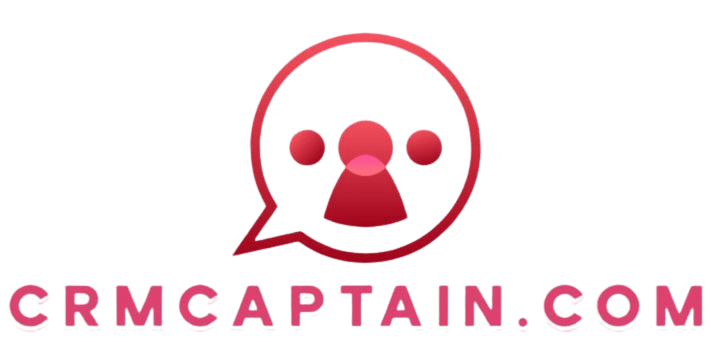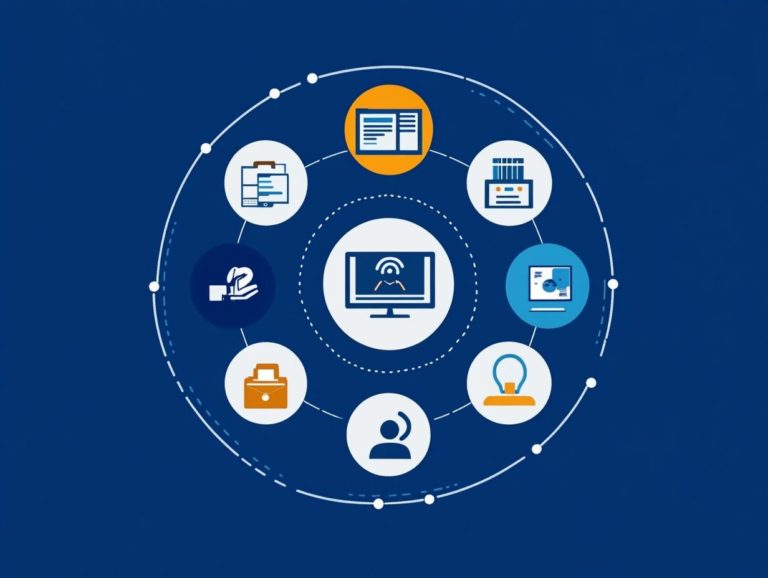How to Assess CRM Integration Needs
In today’s fast-paced business landscape, mastering effective customer relationship management (CRM) is vital.
CRM integration seamlessly connects various systems, streamlining processes and enhancing customer interactions.
This article highlights the benefits of CRM integration, such as improved data management and a richer customer experience.
You’ll gain insights to evaluate your integration needs, choose the right solutions, and implement best practices for success.
Contents
Key Takeaways:

Assess your CRM integration needs by identifying pain points and evaluating your current systems.
Consider data management and customer experience when choosing a CRM integration solution.
Use best practices for implementation and ongoing maintenance for optimal results.
Understanding CRM Integration
Understanding CRM integration is essential for enhancing customer relationships and overall business performance, and exploring strategies for CRM system evaluation can further optimize this process.
This means connecting various software solutions to streamline sales, customer service, and marketing processes.
This approach helps manage customer data, improve communication, and drive profits.
Using CRM software allows you to analyze key metrics and automate outreach while ensuring data security.
Embracing CRM integration transforms customer interactions and positions your business for success.
What is CRM Integration?
CRM integration links your CRM software with different business systems, creating a seamless flow of information.
This provides a comprehensive view of customer interactions, enabling better relationship management.
By consolidating data from sales, marketing, and support, you gain valuable insights to tailor your communications.
Effective integration boosts efficiency, enhances satisfaction, and builds customer loyalty.
It helps achieve business objectives like increasing sales conversions and improving response times, driving performance and growth.
Benefits of CRM Integration
CRM integration significantly enhances business processes, elevates customer experience, and streamlines lead management.
This strategic approach paves the way for increased revenue and sustained growth.
Improved Data Management
Centralizing customer information and streamlining communication are standout benefits of CRM integration.
This centralization makes customer data easily accessible and leverages detailed analytics for informed decision-making.
Utilizing reporting tools uncovers trends in customer interactions, leading to actionable insights.
This enhances capability to tailor services and anticipate customer needs, cultivating stronger relationships.
Effective data management supports performance improvements and ensures seamless information flow.
This drives overall efficiency and elevates customer satisfaction.
Enhanced Customer Experience

Enhanced customer experience is one of the most compelling benefits of CRM integration. It equips you with tools to build meaningful relationships with your clients.
By using personalized communication strategies, you can tailor your interactions to match individual preferences and past engagements. This approach deepens the emotional connection customers feel and fosters loyalty, as clients are more likely to engage with brands that truly understand their needs.
Improved service delivery ensures that queries and issues are resolved swiftly, leading to higher customer satisfaction. With automated tools that help sales teams manage their tasks more efficiently, your sales teams can focus on building relationships rather than getting bogged down in administrative tasks.
These elements create a seamless and enjoyable experience for your customers.
Assessing Your CRM Integration Needs
Evaluating your CRM integration needs is essential. This step allows you to identify pain points and assess your current systems, ensuring they align with your CRM requirements. For more information, check out this guide on how to choose the right CRM integrations.
Identifying Pain Points
Identifying pain points in your existing processes is crucial for successful CRM integration. It helps you tackle specific challenges in your operations and customer relationships.
Without a robust CRM system, your organization may face inefficiencies in lead management, leading to missed opportunities and potential revenue loss. Poor handling of customer data often results in fragmented information, complicating decision-making and hindering personalized communication.
As teams struggle to align their efforts, productivity can drop, causing frustration and undermining overall customer satisfaction. The lack of centralized data makes tracking customer interactions difficult, resulting in a disjointed experience and a decline in loyalty.
Understanding these common pitfalls is vital for any business eager to enhance customer engagement strategies and improve performance.
Evaluating Current Systems and Processes
Evaluating your current systems and processes is crucial for understanding how CRM integration costs and benefits can boost your business performance and protect your data. Start with a thorough audit of your workflows, technology, and data management practices.
By identifying your strengths and weaknesses, you can spot key areas where a CRM system can provide significant enhancements. Pay attention to metrics such as user satisfaction, response times, and data accuracy, as they offer vital insights into your operational efficiency.
When considering various CRM solutions, think about their scalability and integration capabilities. This consideration will help you make informed decisions, ensuring you choose a platform that meets your current needs and supports future growth, especially if you learn how to troubleshoot CRM integration issues.
Choosing the Right CRM Integration Solution
Choosing the right CRM integration solution can transform your business! For optimal results, understanding how to conduct a CRM audit is crucial, as it profoundly influences your operational efficiency and customer relationships.
Factors to Consider

- Data Security: Ensure your data is protected.
- Support Availability: Look for responsive customer support.
- Ease of Use: Choose a user-friendly platform.
- Scalability: Make sure the platform can grow with your business.
- Integration Capabilities: Ensure it works seamlessly with your existing software.
The level of technical support from the CRM provider can be a game-changer. Having timely assistance at your fingertips can prevent downtime and operational hiccups.
All these factors help shape an informed decision, guiding you toward a platform that meets your current demands and adapts to future trends.
Start evaluating your CRM needs today!
Top Integration Tools and Platforms
Several integration tools and platforms stand out in the market for their exceptional ability to enhance CRM software through effective integration. By providing seamless connections to various applications, these tools enable you to streamline your operations and improve data accuracy.
Moreover, they elevate customer engagement.
Among the most notable options available, you ll find:
- Zapier, renowned for its user-friendly interface and extensive app compatibility.
- Salesforce, which offers robust customization features tailored for larger enterprises.
- HubSpot, a powerful choice particularly favored by small to medium-sized businesses for its comprehensive marketing tools and analytics capabilities.
These integrations not only automate repetitive tasks but also allow you to customize your CRM systems to meet your unique requirements. Ultimately, this drives efficiency and fosters better customer relationships.
Implementing and Maintaining CRM Integration
Implementing and maintaining CRM integration requires careful planning and evaluation of CRM software options. This ensures that you can fully leverage its benefits and optimize your operations.
By approaching this process thoughtfully, you set the stage for enhanced efficiency and improved business outcomes.
Best Practices for Implementation
Adhering to best practices during your CRM integration is vital for ensuring user adoption and maximizing the effectiveness of your sales tools.
First, establish clear objectives from the very beginning. These goals will serve as a guiding light throughout the entire integration process.
Involving key stakeholders across departments fosters a sense of ownership and paves the way for a seamless transition. Providing comprehensive training familiarizes users with the new system and boosts their confidence in utilizing it to its full potential.
By prioritizing these elements, your organization can significantly enhance the overall efficiency of its sales tools and elevate customer relationships.
Tips for Ongoing Maintenance and Optimization
Ongoing maintenance and optimization of your CRM integration are crucial to ensure the system evolves alongside your business needs and enhances performance.
Make sure you adopt a holistic approach, which includes implementing regular software updates that introduce new features and bolster security.
Establishing a dependable technical support framework ensures that you and your team have access to assistance whenever challenges arise, effectively minimizing downtime.
Gathering user feedback through surveys or regular check-ins can yield valuable insights into how the system performs in real-world scenarios.
By proactively addressing these areas, you can elevate user satisfaction and ensure that your CRM consistently aligns with your strategic goals, effectively driving growth and fostering customer engagement.
Frequently Asked Questions

What is CRM integration and why is it important?
CRM integration is the process of connecting a Customer Relationship Management (CRM) system with other software or platforms. This connection streamlines and improves data sharing and business processes.
It is important because it allows for a more cohesive and efficient management of customer data and interactions, leading to better customer relationships and increased business productivity.
How can I determine if my business needs CRM integration?
Assessing your current business needs and processes is the first step in determining if you need CRM integration. If you are struggling with manual data entry or difficulty accessing real-time information, then learning how to manage CRM integrations effectively may be beneficial for your business.
Inefficient communication and collaboration between departments also indicate the need for CRM integration.
What are the benefits of CRM integration?
CRM integration offers several benefits, including improved data accuracy and increased productivity. It also enhances customer service and supports better decision-making through access to real-time data.
Additionally, it allows for a more comprehensive view of customer interactions and helps identify areas for improvement in the sales and marketing processes.
Want to learn more? Contact us today to discover how CRM integration can benefit your business!
What Are the Different Types of CRM Integration?
There are three main types of CRM integration: internal, external, and two-way. Internal integration connects various departments within your organization.
External integration links your CRM with other software or platforms. Two-way integration allows data to flow back and forth between your CRM and other systems.
How Do I Assess Compatibility with Other Systems?
To check if your CRM works well with other systems, evaluate its capabilities and data structure. Additionally, consider exploring how to ensure smooth CRM integrations by looking for integration features or plugins that fit your business needs.
Consult your CRM provider or an integration expert for a detailed evaluation.
What Factors Should I Consider for CRM Integration?
When assessing CRM integration needs, consider your business goals and current technology setup. To make informed decisions, refer to resources on how to evaluate CRM integration options. Additionally, think about data security, privacy requirements, and your budget.
Involve key stakeholders in this process to make sure all integration needs are addressed.






